 A project starting early next year in East London hopes to bridge the digital divide by broadband-enabling a number of housing estates.
A project starting early next year in East London hopes to bridge the digital divide by broadband-enabling a number of housing estates.
The first stage of the Shoreditch Digital Bridge (SDB) will link-up 1,000 tenants of the Haberdasher and Charles Square Estates, Shoreditch before rolling out to the remaining 20,000 residents. Video Networks, who are best known for the broadband and IPTV service Homechoice, will be providing the connectivity.
Shoreditch/Old Street/Hoxton is a highly mixed area. It’s probably best known as a hip and cool area, mocked by some, celebrated by others and the source of the now-self parody Hoxton Fin haircut (pictured below). The flip side is deprivation. The apparent contrast makes sense. Artists moved into the area _because_ it was run down and the space they needed to paint in was cheap to rent, then over a ten year period it changed into a ‘destination.’
 Happily, this project is focused on the original residents, not the ones who live in the £1/2m flats – sorry, apartments.
Happily, this project is focused on the original residents, not the ones who live in the £1/2m flats – sorry, apartments.
The functions available to the residents will be wide and ambitious.
The Education Channel will provide online learning, allowing students to submit homework assignments and work with virtual tutors. When this was used in Kingston upon Hull by KIT working with Kingswood school, it was a huge success.
One key part of closing the digital divide is the provision of a PC on TV, which will be operated adding a wireless keyboard using software such as Citrix. When we spoke to Homechoice about it, they told us this will be able to used with their current Set Top Box.
Interestingly, residents will be able to watch the CCTV cameras around the area – something that for years ‘the powers that be’ have said would never occur.
 Additional services include a Health channel allowing patients to book GP appointments, provide virtual consultations and on-line health and diagnosis information; a Consumer Channel, allowing on-line group buying of common services such as gas, electricity and mobile phone tariffs; and an Employment Channel, providing on-line NVQ courses, local jobs Websites and virtual interview mentoring.
Additional services include a Health channel allowing patients to book GP appointments, provide virtual consultations and on-line health and diagnosis information; a Consumer Channel, allowing on-line group buying of common services such as gas, electricity and mobile phone tariffs; and an Employment Channel, providing on-line NVQ courses, local jobs Websites and virtual interview mentoring.
Satellite companies have for a long time had problems providing services to built up urban areas. Providing TV services over a broadband connection has for a long time made sense. The icing on the cake will be the Homechoice IPTV and broadband service, available at an additional charge.
We hope the SDB project will build on succeeded and lessons learned of previous pioneering work will be integrated.
The Shoreditch Trust
Shoreditch Digital Bridge
Hoxton Fin image courtesy of LondonCircus
Charles Square Image courtesy of Hackney Council
 One of our Digital-Lifestyles favorite digital media entrepreneur Swede, Jens Nylander has extracted himself from recent problems and brought out a new mp3 player called MP-X.
One of our Digital-Lifestyles favorite digital media entrepreneur Swede, Jens Nylander has extracted himself from recent problems and brought out a new mp3 player called MP-X. Submissions should give the name and postal address of the person sending the memorandum and should state whether it has been prepared specifically for the Committee. If the memorandum is from an organisation rather than an individual, it should briefly explain the nature and membership of the organisation. The Committee may publish some of the submissions it receives.
Submissions should give the name and postal address of the person sending the memorandum and should state whether it has been prepared specifically for the Committee. If the memorandum is from an organisation rather than an individual, it should briefly explain the nature and membership of the organisation. The Committee may publish some of the submissions it receives.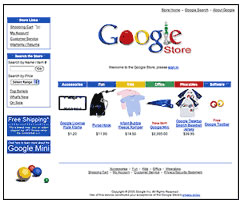 Always remember, Goggle may look like a search engine company, but it is, in fact, an advertising company.
Always remember, Goggle may look like a search engine company, but it is, in fact, an advertising company.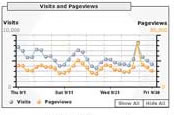 The history
The history Poor old BT. Now that it’s reached a settlement with OfCom that allows it to keep retail and wholesale arms under one, some would say, severely stretched umbrella, commentators emerge from cover and say it might be better if it’d spit into two (or more) parts. The cost of
Poor old BT. Now that it’s reached a settlement with OfCom that allows it to keep retail and wholesale arms under one, some would say, severely stretched umbrella, commentators emerge from cover and say it might be better if it’d spit into two (or more) parts. The cost of  A project starting early next year in East London hopes to bridge the digital divide by broadband-enabling a number of housing estates.
A project starting early next year in East London hopes to bridge the digital divide by broadband-enabling a number of housing estates. Happily, this project is focused on the original residents, not the ones who live in the £1/2m flats – sorry, apartments.
Happily, this project is focused on the original residents, not the ones who live in the £1/2m flats – sorry, apartments. Additional services include a Health channel allowing patients to book GP appointments, provide virtual consultations and on-line health and diagnosis information; a Consumer Channel, allowing on-line group buying of common services such as gas, electricity and mobile phone tariffs; and an Employment Channel, providing on-line NVQ courses, local jobs Websites and virtual interview mentoring.
Additional services include a Health channel allowing patients to book GP appointments, provide virtual consultations and on-line health and diagnosis information; a Consumer Channel, allowing on-line group buying of common services such as gas, electricity and mobile phone tariffs; and an Employment Channel, providing on-line NVQ courses, local jobs Websites and virtual interview mentoring. The whole of John Lennon’s solo catalogue will be made available digitally, for the first time, on 5th December – Oooo, just in time for xmas.
The whole of John Lennon’s solo catalogue will be made available digitally, for the first time, on 5th December – Oooo, just in time for xmas. Yoko Ono, John Lennon’s wife, told of her views on if John would have been an Internet fan, “New technology is something he always embraced and this is something he would have loved. I always say that he would have been very excited by all the opportunities offered by the development of new means of communication.”
Yoko Ono, John Lennon’s wife, told of her views on if John would have been an Internet fan, “New technology is something he always embraced and this is something he would have loved. I always say that he would have been very excited by all the opportunities offered by the development of new means of communication.”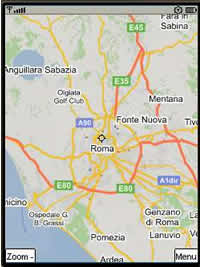 We thought that it was worthwhile breaking out the following information that we gain in researching two article;
We thought that it was worthwhile breaking out the following information that we gain in researching two article; 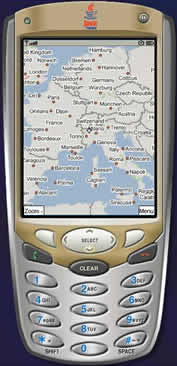 For those who have better thing to do with their lives than fanatically watch every twist and turn of online technology, or if you’re living outside the US of A, you may well not have been using Google’s recently launched Google Local For Mobile (GLM)- or even have heard of it.
For those who have better thing to do with their lives than fanatically watch every twist and turn of online technology, or if you’re living outside the US of A, you may well not have been using Google’s recently launched Google Local For Mobile (GLM)- or even have heard of it.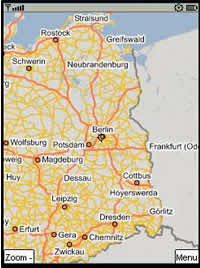 More detail than the browser version
More detail than the browser version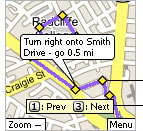 Despite their emphatic denial, Google appear to be planning to bring GPS to the recently announced Google Local For Mobile.
Despite their emphatic denial, Google appear to be planning to bring GPS to the recently announced Google Local For Mobile. The GPS feature could well be waiting for a second release of the service, or waiting for next-gen handsets with aGPS built into them, to become more widely used.
The GPS feature could well be waiting for a second release of the service, or waiting for next-gen handsets with aGPS built into them, to become more widely used.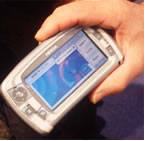 The BBC needs to move fast to create suitable partnerships to be able to ride the new wave of ‘TV on the go’. That’s my conclusion after attending a recent IIC event last week (that’s the International Institute Of Communications to you). There I can reveal I was drawn into what felt very much like a mobile content ‘love fest’.
The BBC needs to move fast to create suitable partnerships to be able to ride the new wave of ‘TV on the go’. That’s my conclusion after attending a recent IIC event last week (that’s the International Institute Of Communications to you). There I can reveal I was drawn into what felt very much like a mobile content ‘love fest’.